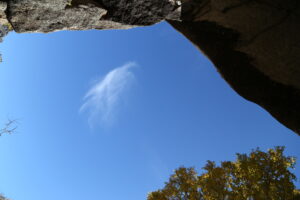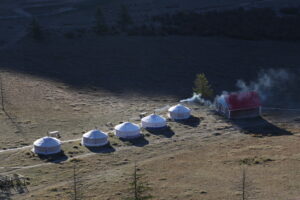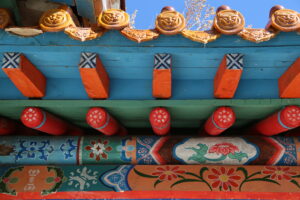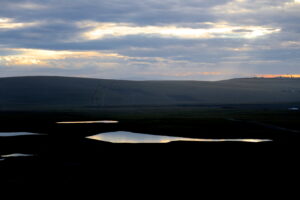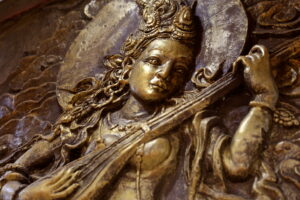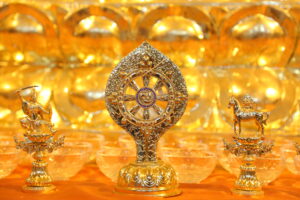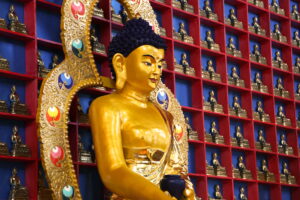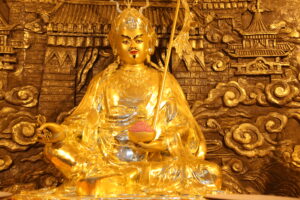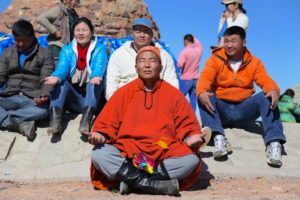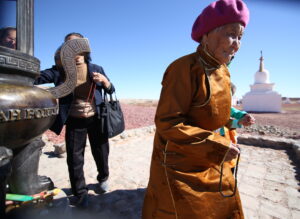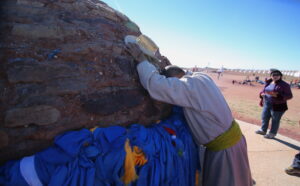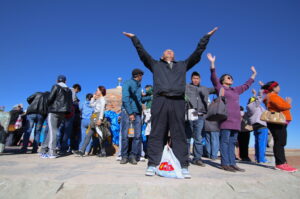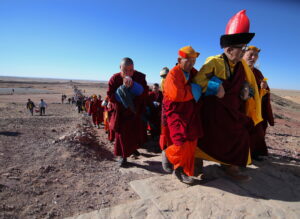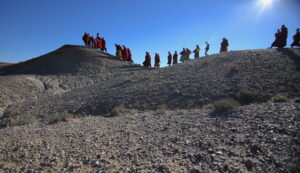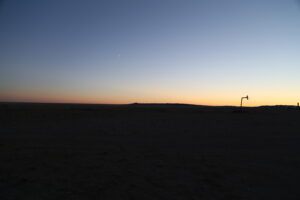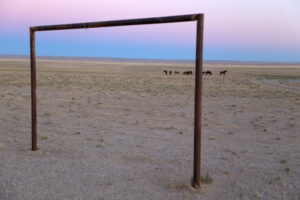Photographing in Mongolia was challenging on many levels – the harsh environment, the excitement of the whole project coming into fruition, the lack of time available for an authentic, intimate connection to the place.
There’s a certain loneliness I felt under the expansive sky of the Gobi and the vast grasslands, which in turn were contrasted by the frantic and claustrophobic capital of Ulaanbaatar. It’s a beautiful land, yet cold and alien. Ancient, wild and powerful spirits have been in the working for eons. I realized that photographically I would need a much longer time to capture it, or come close to – and that’s what I felt that was missing the most – time. Running around from place to place, overwhelmed by the force of the land, I could not match my rhythm with that of the environment. My camera was pointed everywhere attempting to reveal the vastness of the land, the contrast of concrete development and the ancient tradition of a nomadic people. I also began to find friendship – the project members, our NASCAR-worthy bus driver Bayaraa, our translator Tsering and her daughter Bodhi.
I was humbled by the experience, realizing I have very much to learn to be worthy of documenting such an experience well. I learned about the importance of shooting for quality over quantity, although everything was picture-worthy. I have never truly done something like this – arrive at a completely new place and attempt to capture its essence with very limited time, and Mongolia was a great place to begin to learn because it’s so unique. Now in Nepal, I’m taking more time to focus on the macro and micro, and aware of my place as a student of this medium and the world at large.
